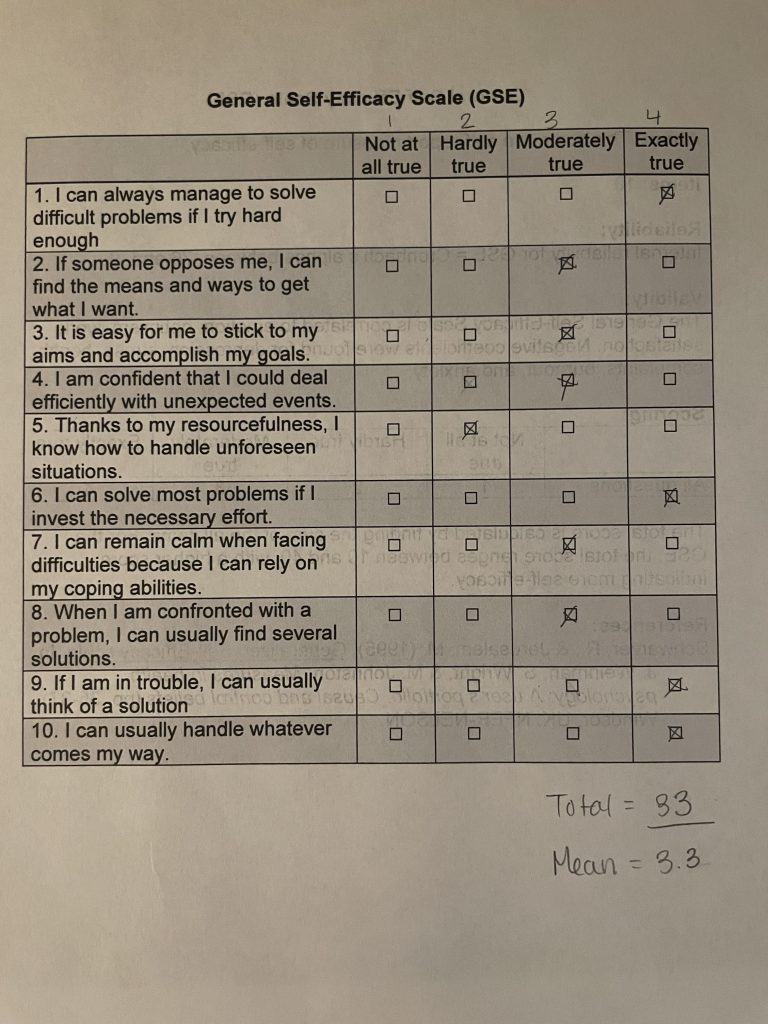Blog 10
I chose to take this course to help broaden my understanding of psychology and social behaviors. I am hoping to become a mental health counselor and an understanding of human social behaviors is imperative to do that job well. I feel confident that I have learned concepts in this course that I will carry with me to help improve my understanding of psychology. Starting this course, I had read the course objectives and felt like the list had highlighted some topics that I had heard about before but did not feel very familiar with. Throughout this course, I have found myself taking what I have learned in the reading and through assigned discussion topics and making connections to things that I have previously learned. Topics such as discrimination and attraction had been discussed in previous courses. I felt like I understood some aspects of each of these concepts but this course has added depth to these topics. I have found myself discussing the topics we have learned in this course with others, and have seen that these conversations are reflective of the course objectives.
I have found myself focusing on the differences in our experiences and how they can create different perspectives for different individuals. This class has helped me to tune back into our human similarities. The processes in which we develop understanding, patterns of attraction, the formation of prejudice and discrimination, and our understanding of how each other works are all things that we go about in similar ways due to our shared evolution.
I enjoyed this course but would have personally benefited from taking this course in person. I have enjoyed the topics and the concepts we have discussed, however, I have felt like I would have benefited from being able to discuss these concepts in class with peers and the professor to help cement these concepts and hear them from multiple points of view. I feel like my understanding of Social Psychology has deepened, however hearing these concepts through the understanding of my peers would have helped me to have a more well-rounded understanding through hearing other’s opinions and point-of-view.
This course has taught me how to think about how I can better consider other’s perceptions and better understand what they’re experiencing in order to be able to help them. I hope to be able to use this knowledge in the future to better understand how I can help people in their struggles with understanding the perspective of others and how we work collectively.
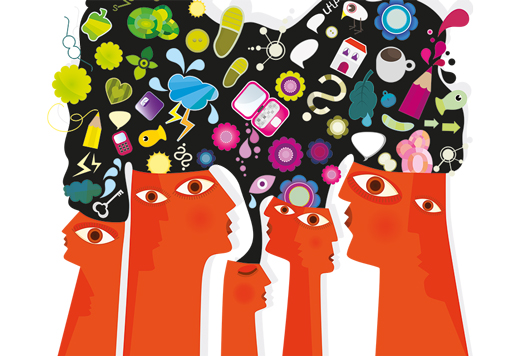
Blog 9
In completing the assignments for the e-Portfolio, I have seen different patterns in human behavior that I had not previously considered. Whether it’s similar patterns of attraction, similar challenges and anxieties faced in new situations, similar patterns of interaction with others, etc., people operate in similar patterns. Discussing the evolved views psychologist have on our collective social behavior has highlighted for me that Social Psychology is a field that is always developing its understanding. This course has shown me the importance of experimentation in better understanding Social Psychology and the way we interact. Each chapter highlighted experiments pertaining to the chapter subject, and most of those concepts we reinforced in our assignments. I found myself wondering how similar my responses were to others’ responses and whether the professor could predict what our responses to the assignments would look like. I had considered how recognizing patterns in behaviors and decision-making could help me become a better therapist or counselor in the future. If I can recognize a pattern of behavior, maybe I will be able to better understand what someone is experiencing based on what I know about social psychology and collective human experiences.
The concept of schemas reinforces the concept of similar reactions and actions in human experience. In other psychology classes, we have discussed how people’s behavior often fits into a schema. We can predict how someone may react or what they may do in a given situation by studying how other people have reacted or the actions that they have taken in similar scenarios. However, people vary greatly in how we are brought up and the experiences we have. We follow a similar logic, reasoning, and responses to others around us. As a result, we learn collectively, and our adaptations are often passed on to others. I often find myself considering the differences in each person’s views and actions based on the vastly different lives we live. This course has helped to teach me to start considering the similarities in people’s actions and how I can use that to better understand how someone may act or the reasons behind their actions.

Blog 8
C. Nathan DeWall discusses research by D. M. Buss on the conflicts in human mating. The article reviews how to identify sexual conflict in three different stages of the human mating process. Examples such as lying in the early stages of a romantic relationship to increase the likelihood of attaining their sexual goals, acting out of jealousy during a relationship in fear of infidelity, and stalking an ex-partner after a relationship has ended to either rekindle the relationship or prevent a successful future relationship for them can be seen frequently in relationships. I like how the article points out that these actions are evolutionary. You see these patterns in life and portrayed through the media, each gender typically engaging in their own form of this behavior. Seeing these patterns makes me wonder why we act the way we do in relationships. There are obviously differences in relationships based on the individuals involved and no relationship follows the same path. However, you often see people in relationships playing out these sexual conflicts. I think it is interesting that these patterns are linked to evolution and look forward to reading deeper into this topic.
Ways Men upset Women; cheating, giving other women attention, not listening when spoken to, not being emotional enough, not showing empathy, sexualizing other women, being controlling in a relationship, being jealous, depreciating the pain of sexual assault and the like, leaving an argument or discussion, not wanting commitment in a relationship, calling women crazy, gaslighting in an argument, too much time on their phone or playing video games, going out without partner often, and leaving their underwear right outside the laundry basket.
Ways Women upset Men; “nagging,” flirting with other men, trying to get attention from other men, complaining, being overly emotional, trying to force long discussions about relationship problems, invading the privacy of their partner, being jealous, not respecting partner’s downtime, wanting commitment early in a relationship, being overly needy, and eating their partner’s food when they don’t order their own.


Blog 7
In Linda Ferguson’s video, she discusses connections between Self-Regulation and Emotional Intelligence. Although Ferguson briefly discusses the importance of Emotional Intelligence in understanding the need for Self-Regulation, she also includes techniques to help practice better Self-Regulation. When a person has Emotional Intelligence, they are better at understanding how their emotions can affect their decision-making and their ability to Self-Regulate. When you understand where your emotions stem from and understand that you do not have to immediately act on them but rather take the time to examine emotions and feelings and decide how to best respond within your personal capability, you are using Self-Regulation.
For me, Emotional Intelligence has helped me to control my anger. Growing up in a household with many unregulated anger and emotions, I didn’t learn how to manage my emotions. It was normal for me to see large emotional responses, which is how I learned to function. Therapy has taught me how to continue improving my emotional responses, helping me control feelings of explosive anger and sadness. In working towards better Emotional Intelligence, I have learned to take a second to observe and think through my emotions rather than immediately responding negatively. Personally, I use some of the same methods Ferguson mentioned. I often find myself getting angry or upset very quickly and having to practice controlled breathing until I can hear the little, rational voice in my head again, helping me figure out my emotions and help guide me to a better response. After breathing or body-scanning, I can think through an appropriate response that helps lead to a conclusion rather than adding more negativity to a situation.
Advancing my Emotional Intelligence will be a lifelong journey for me. I continue to read about it, listen to podcasts relating to regulation, and surround myself with resources that value Emotional Intelligence and Self-Regulation. I have recently discovered that list-making and meditation help me to deal with more lasting feelings. It allows me to think through situations and feelings safely, without judgment. I will continue to work on my breathing methods as I have noticed the more I practice, the less time it typically takes me to reset and think more clearly.
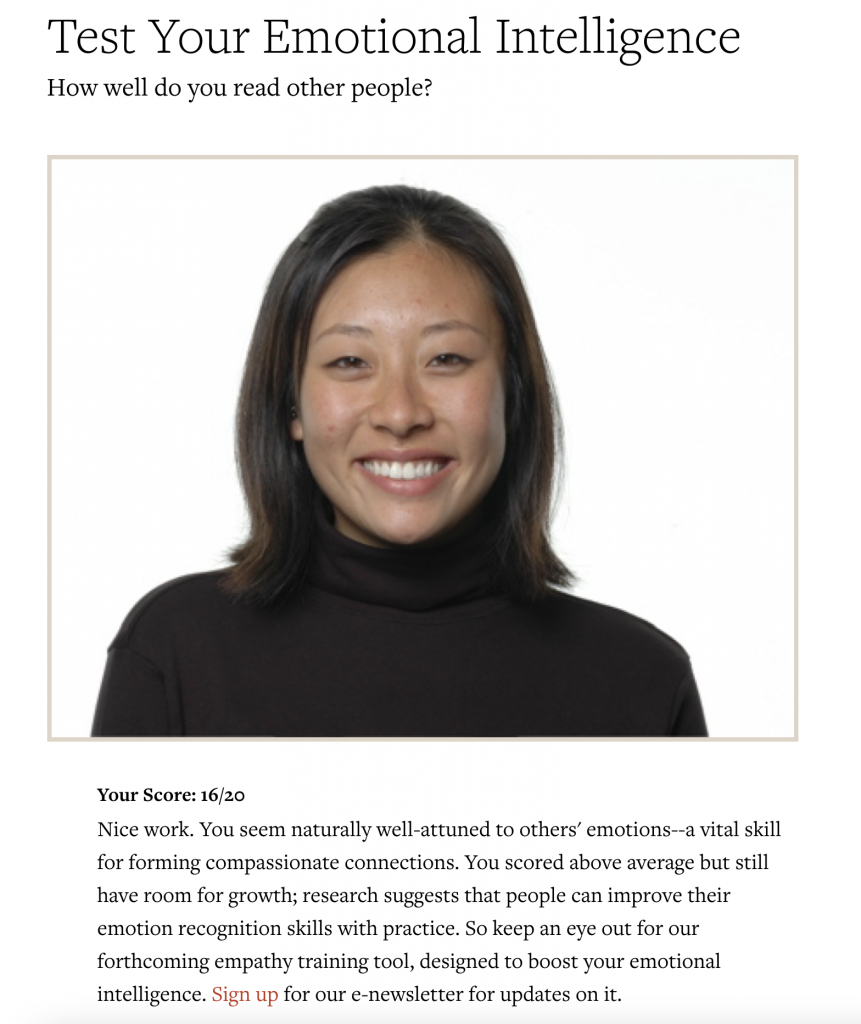
Blog 6
Jean Kilbourne’s TED Talk about the over-sexualization of women in advertisements was upsetting. I have been in classes that have discussed this kind of harmful over-sexualization before, but it never ceases to amaze me when I see new degrading ads. However, Kilbourne was so well-spoken about the matter, and I felt she presented very well. Kilbourne pointed out that sexualization and objectification of women is not something new in advertising. Still, it has certainly become more harmful with the introduction of photoshop and the access younger women and girls have to these images. In addition, the women in ads often display impossible body and skin standards and shame women into buying products or make products more appealing by relating an over-sexualized, often barely dressed woman to the advertisement.
I have dealt with the effect ads like this have had on my own life in therapy and eating disorder recovery. Ads like this have been around my entire life, constantly making me feel like I was not meeting current beauty standards or that my sex appeal measured my value. Unfortunately, this is the reality for many people exposed to these over-sexualized advertisements and objectification of women. They play a major role in affecting how women and girls see themselves and what they believe they can.
The ads I chose to include all displayed various issues discussed in Kilbourne’s TED talk. The first ad shows a beautiful, young, thin woman in a compromised position, normalizing the assault of women and rape culture. The second shames women about their body shape and size to convince them to buy weight loss products. This contributes significantly to self-esteem issues in women. The third ad relates sexuality to young girls and their perceived innocence. It is disgusting to me that an ad would relate sex to young girls, as Kilbourne discussed in her talk. The fourth ad displays the normalization of abuse and assault on women, showing women as property to be dealt with by men aggressively. Finally, the fifth ad shows a young beautiful woman over-sexualizing a fast-food sandwich with a sexual caption, proving Kilbourne’s point that everything is over-sexualized.
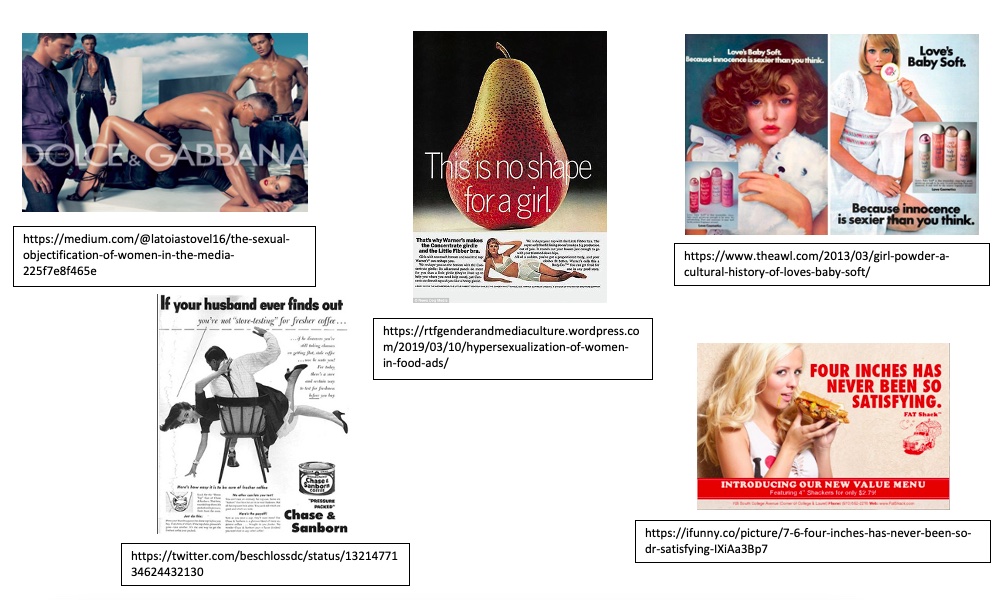
Blog 5
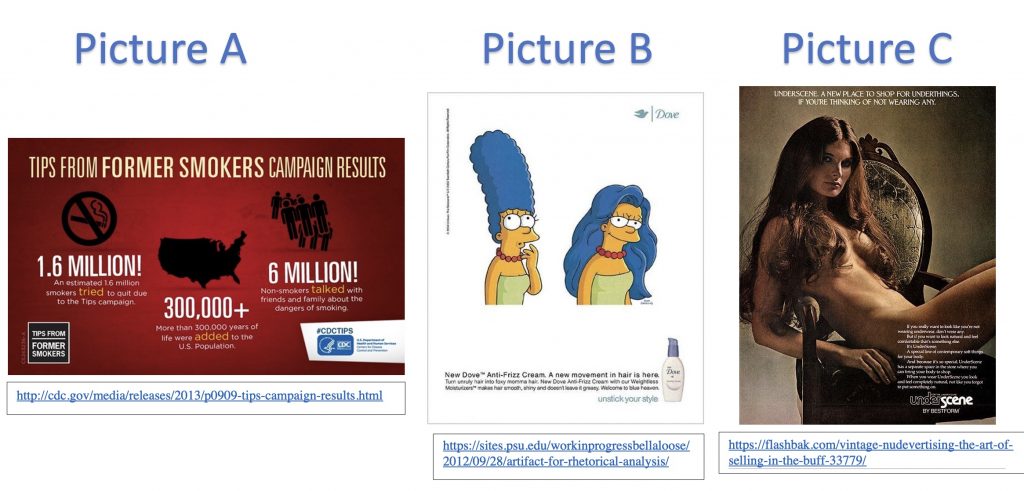
- Picture A: This advertisement represents a credible source. The advertisement is a campaign to encourage people not to smoke. The campaign is run by the Center for Disease Control and Prevention. The CDC is a well-known organization, so immediately I consider the advertisement to be meaningful and credible. The CDC uses results from their own previous campaigns to show successful statistics resulting from their ads. The CDC’s use of their well-known logo and statistics showing prior success shows that this is a credible source, making it more likely for someone to consider the message being delivered by the ad.
- Picture B: This advertisement stuck out to me as not being a credible source. Although Dove is a well-established company, they use a fictitious character with animated hair to show the smoothing effects of their product. While I understand that this is supposed to be representative of the anticipated results of the hair product, it is not showing me how I can expect the product to actually look and work on human hair. Although I did find it amusing, it is lacking any aspects that show me the product actually works. The advertiser’s choice to use animated hair to sell their product makes the product seem less credible as if a drastic difference could not be seen on an actual model.
- Picture C: This advertisement consists primarily of a naked female and is an example of an attractive source. The advertisement is for underwear, although she is not wearing any. The beautiful female does the job of enticing viewers to consider the advertisement. This advertisement takes advantage of the fact that attractive advertisements are more appealing, and had made their entire ad revolve around the attractiveness of the nude model. This advertisement wants the consumer to consider whether they would be as attractive as the model if they bought and used the product being sold. I did not find this particular advertisement to be effective. I have fallen for many social media ads advertising beautiful women with “ideal” bodies who are selling protein or other supplements. Prior to my disordered eating recovery, I wanted to make changes in my lifestyle that allowed me to have the body I want, a body similar to the girls in the advertisements. This made the advertisements very persuasive and appealing to me and I would often end up buying the product.
Blog 3
I have typically found that I tend to gravitate towards people with similar tastes in music. I am always open to discovering new music, and I listen to a large variety of different artists and genres. The people I am closest to in my life have all seemed to influence me to add different artists and songs to my music library, each of these people relating to a different genre that I enjoy. My partner and I bonded a lot over music at the beginning of our relationship. We would listen to music when we were together and look forward to introducing each other to new songs within our favorite genres. We would frequently go to concerts together and deeply enjoy both the music and our time together. I hadn’t thought much about my friends and family’s connection through our shared love of music. Overhearing someone listening to the types of music I like has been a conversation starter for me more than once. It is certainly one of my favorite things to bond over and share. I feel like all of my favorite people can relate to me in some way with the music we both enjoy, and taking the time to enjoy music together is a great way to further our connection and bond.

Blog 2
I have found the type of student I am has changed over the years. The type of student I feel I am is often reflective of what I have going on in my personal life at the time. Recently, I have found myself to be an anxious student. There are aspects of school that give me anxiety, and I know many others can relate. I wear many hats during the day as a mother, partner, employee, and student. Being a student is the category I currently have the least confidence in. I know that I am a motivated, intelligent person capable of getting good grades and earning my degree, this is reflected in my General Self-Efficacy Scale with a mean score of 3.3. What the score does not show is how I feel in times of anxiety. Continuing to work with my therapist on managing my anxiety and avoidance behaviors would help to increase my confidence as a student more regularly. Based on my score, I can see that I believe in myself and know that I am capable, but I need to work on having that faith in myself and motivation on a more consistent basis. My faith in myself seems to be based on how I feel when I am functioning well and in a good routine. Unfortunately, I often fall short of the expectations I carry for myself and let my workload pile up. I feel like my self-efficacy scores reflect my ideal self, and I should see it as motivation and a reminder that I have faith in myself for a good reason.
General Self-Efficacy Score
